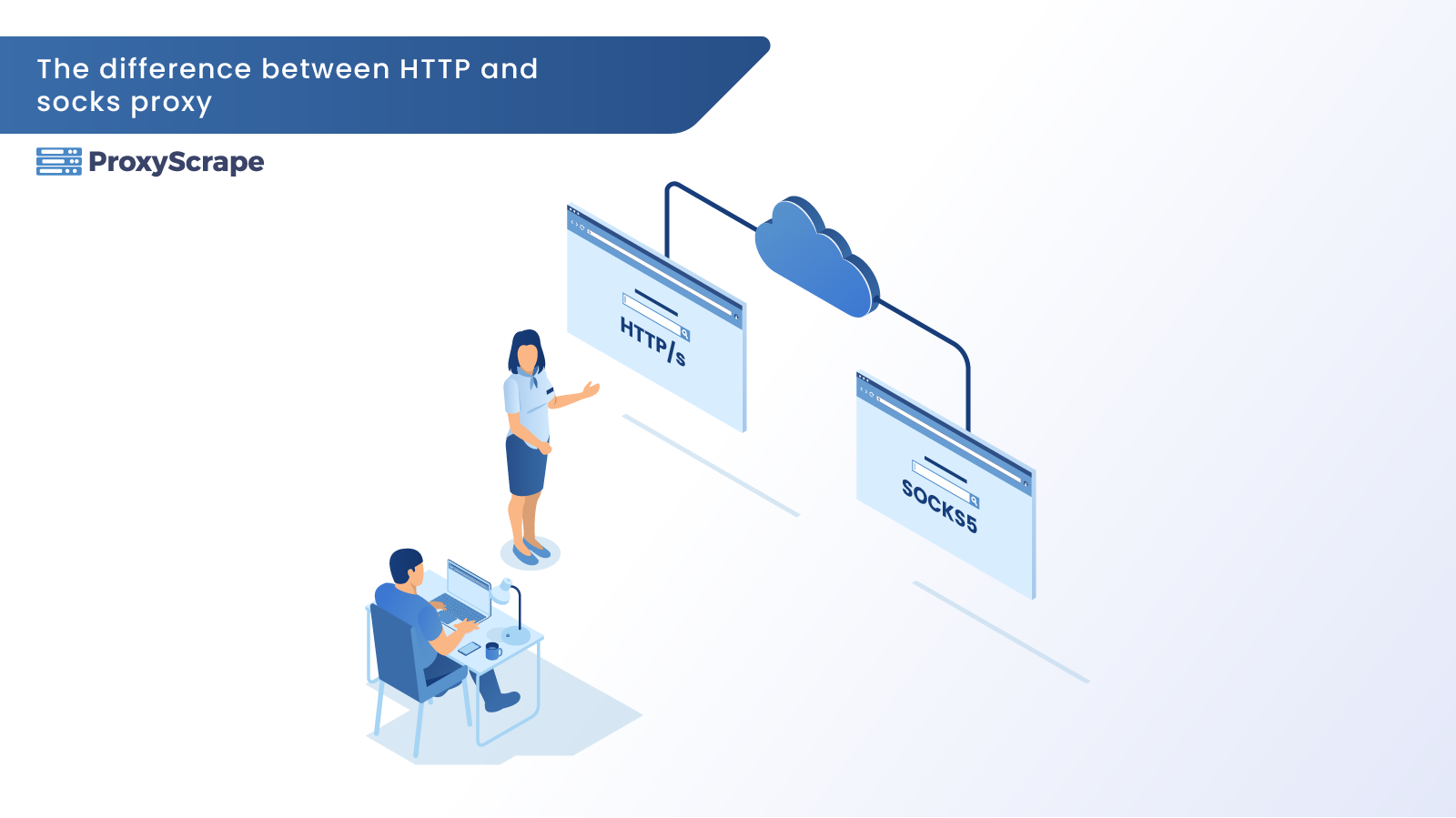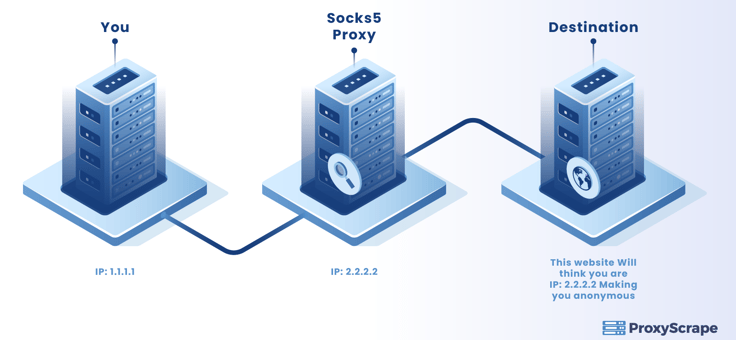Socks vs. HTTP Proxy: How They Work and Key Differences

As there is a massive rise in proxies’ usage for carrying out internet tasks, vendors have introduced various types of proxies over the years. In this article, you will discover significant differences between HTTP proxies and Socks proxies, which should ease your decision-making process when deciding which proxy to use over the other. Knowing the
As there is a massive rise in proxies’ usage for carrying out internet tasks, vendors have introduced various types of proxies over the years. In this article, you will discover significant differences between HTTP proxies and Socks proxies, which should ease your decision-making process when deciding which proxy to use over the other.
Knowing the in-depth technical jargon of HTTP and Socks Proxies can be overwhelming. However, knowing the fundamental differences between the two would undoubtedly enhance your knowledge of how they function, in addition to speeding up your decision-making process.
TLDR; Major Differences between HTTP Proxies and Socks Proxies
A significant advantage that Socks has over HTTP is its ability to adapt to any given situation. This is primarily attributed to the fact that the Socks/Socks5 proxies could communicate with any protocol (HTTP, TCP or UDP). Whereas the HTTP proxies solely communicate with applications that support HTTP protocols. This is not to say that we should rule out the use of HTTP proxies altogether.
On the other hand, Socks proxies help you open doors to unleash the many corners of the digital universe.
HTTP proxies can understand data and web traffic in a way that Socks/Socks5 cannot. Therefore, they are most commonly used in sophisticated techniques such as web scraping. For example, if you need to scrape data from a website such as Amazon, the HTTP proxy can interpret the data before downloading and saving it to your disk. This would save you ample time spent analyzing heaps of data by yourself.
You now have an understanding of the fundamentals of how the HTTP and Socks proxies work. So now is the time to look into which proxy out of the two is more suitable for your everyday tasks.
What are HTTP Proxies?
To provide you a brief overview of how proxies work in a typical Client-Server setup, let’s consider this scenario. When a client, a web browser, requests a resource (web page or an image) from a server (Apache), a server returns it with the aid of Hypertext Transfer Protocol (HTTP).

When a proxy server is present in the above model, it acts as an intermediary between a client and server. This implies that an extra layer is present in the client-server model. In such a scenario, the server is unaware of the presence of a client device. Therefore, only your proxy’s IP address would be visible to the server rather than your IP address. Furthermore, a proxy server can detect any malicious traffic between the client and server and cache all the data it receives from the internet for later use.

Proxies that make use of the HTTP protocols are known as HTTP proxies. They are built with the help of specific HTTP protocols in mind. Therefore, HTTP proxies more or less rely on fetching and receiving the data mainly through HTTP protocols. Most HTTP targets run on 2 port numbers, 443 & 80, the default ports used to rout all the HTTP traffic.
Benefits of HTTP proxies
Although we have not looked at Socks proxies yet, we will quickly dive into some of the benefits that HTTP proxies offer for users. HTTP proxies are built with one thing in mind. That is to transport HTTP data. Once we cover the Socks proxies, you will gain an understanding of which of the two proxies are better.
For now, here are some of its benefits:
- HTTP proxies provide built-in encryption
Most of you might be aware of the encrypted version of the HTTP protocol, HTTPS. This protocol is abundantly available. Encrypted HTTP proxies protect you from sensitive communication such as an email being leaked and any form of malicious acts such as intruders monitoring your web traffic.
- Designed to transmit only the HTTP data
HTTP proxies are designed to transfer only the HTTP data. If you are searching for a proxy merely for web browsing, then an HTTP proxy would be your first choice.
- Freely available
The majority of the proxy services that you see abundantly on the internet are FREE Proxy services. They are easier to set up due to the lack of an authentication process. However, the Free proxies come with certain limitations and risks that you shall discover in the section.
Usage of HTTP Proxies in Real World
Real-world examples that use HTTP Proxies are public proxies, private proxies, and some VPN services. Let’s have a glance at some of these HTTP proxies.
Public proxies – These are HTTP proxies found on free proxy lists, which are extremely slow. Since they are free and highly available, heaps of people are sharing them.
Private proxies – Compared to the Public proxies, these HTTP proxies serve better as they possess a speed of over 1,000 MB/s. An excellent example of private proxies is datacenter proxies.
So now you have grasped the fundamentals of HTTP protocols. So, let’s jump into Socks Proxies.
What are Socks Proxies?
Socks stands for Secure Sockets, aiding communication between server and clients by routing traffic through a network firewall. Unlike HTTP proxies, socks can transport any form of traffic transmitted from a program or a protocol. Therefore, the Socks proxies are called lower-level proxies.
How Socks works
When a client initiates a request to a server, the Socks proxy establishes a connection through Transmission Control Protocol (TCP). In certain situations, Socks proxies also rely on User Datagram Protocol (UDP) to connect to a server.

Benefits of Socks proxies
The use of Socks proxies provides immense benefits to the client. One such benefit being, clients can connect to a remote server that only supports UDP, which would otherwise be impossible over a TCP connection. With socks proxies, it does not matter what network protocol you are using (TCP or UDP).
Security of Socks proxies
As far as security is concerned, the Socks proxies provide an enhanced protection level than their HTTP counterparts. Unlike Socks proxies, the HTTP proxies understand and interpret traffic between server and client. Therefore, it is more likely that HTTP proxies are prone to attacks than Socks proxies, which cannot read the data between client and server. If you are a heavy user of the internet, Socks5 is your answer as it provides sophisticated authentication mechanisms. Socks5 proxy, by the way, is the latest Socks proxy that is available on the market.

Speed of Socks proxies
In comparison to HTTP proxies, the Socks proxies are not slower or faster than them. The speed will ultimately depend on your proxy server’s settings which in most circumstances is above 1,000 MB/s.
However, an important aspect to highlight here is that Socks proxies require less coding to run. Therefore, its speed is faster than that of HTTP proxies. As you shall see in the preceding section, when it comes to downloading, Socks is faster.
Should you use HTTP or Socks for your usecase?
Maybe you do not know if your target supports HTTP or Socks. This section should help you decide quickly which protocol you should choose.
When you should use HTTP proxies
You should consider an HTTP proxy if your target only requires the HTTP protocol. Generally, this is any website that you try to connect to.
HTTP proxies can also perform caching and many other microservices, which can improve your browsing speed. The proxy can also perform small modifications to your traffic, such as optimizing images. With Socks proxies, this is not possible since it can not see nor modify your traffic.
When you should use Socks proxies
Socks proxies can be used for any type of target. It does not matter if it relies on the HTTP, TCP, or UDP protocol. Socks proxies support them all!
Socks proxies are also a lot faster than HTTP proxies and are great for performing large downloads.
How ProxyScrape can help you with your Proxy needs
We at ProxyScrape can help you with your Proxy needs with ultimate solutions. We frequently update our FREE proxy list on our website, with public proxies obtained from multiple sources throughout the web.
You will gain the latest & freshest proxies as we update them:
- 24/7 throughout 365 days.
- Every minute we detach any proxies that do not function
- Every second we update our proxy list with nine proxy checkers and three scrapes.
Furthermore, you can download a proxy as a text file or access them via the proxy API.
Get your proxy today by visiting this page.
Or are you looking for proxies that are less public and exclusive to ProxyScrape users? Then check our datacenter proxy service, which supports both the HTTP and Socks protocol.
Conclusion on HTTP vs. Socks Proxies
We hope that now you are aware of the significant differences between the HTTP proxies and Socks proxies to decide which one to choose over the other.
When you are confronted with massive data downloads such as torrent downloads, the choice is obvious. The Socks proxies serve well for this purpose. In contrast, if you are an average user with minimal downloads or need data processing on the server-side, then HTTP proxies would be your best bet.